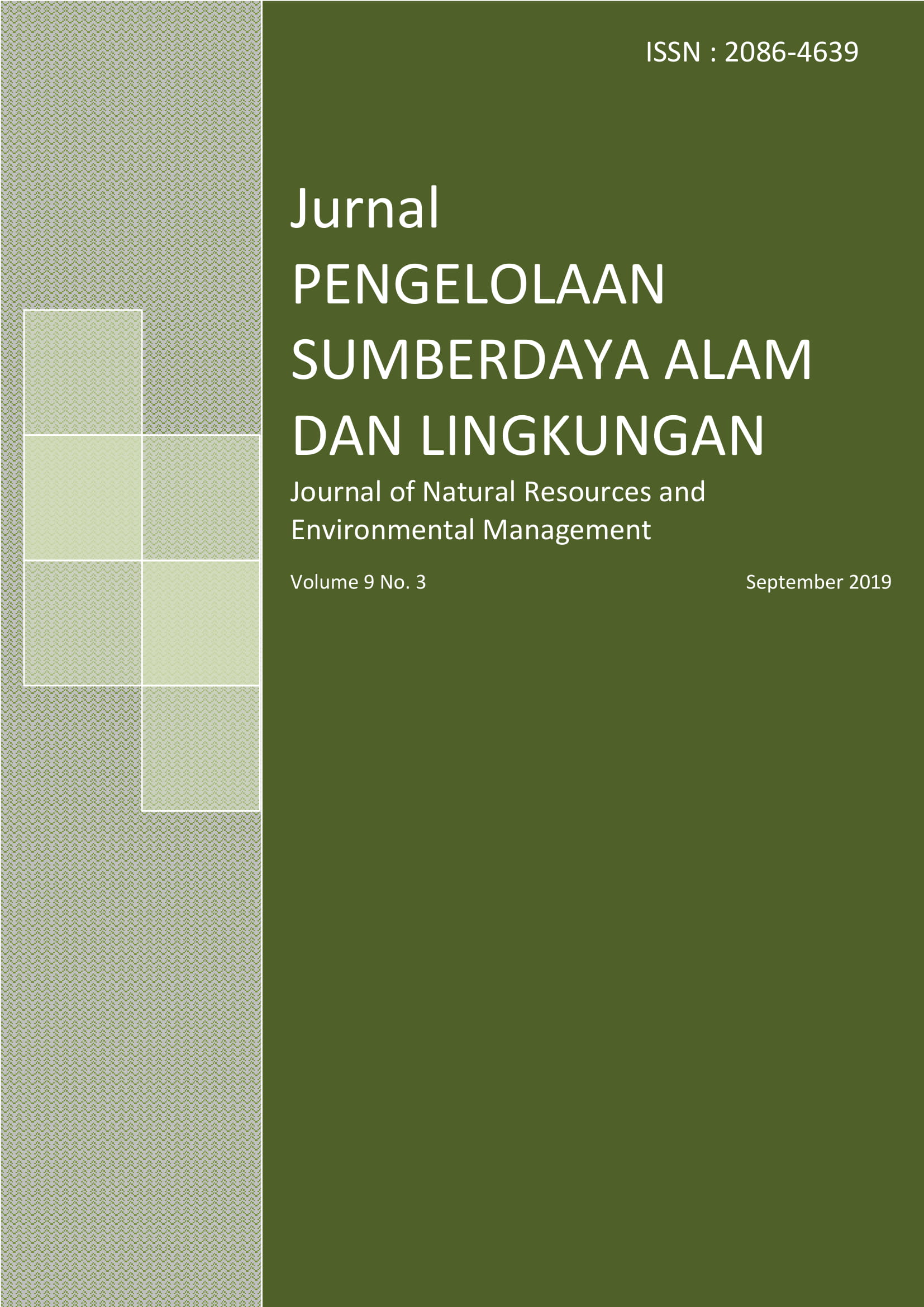Abstract
References
Agustina, D., Hariyadi and Saharuddin, 2014. Socio-Economic Environmental Analysis of Sustainable Palm Oil Plantation Based on ISPO PT. Tapian Nadenggan, Jurnal Pengelolaan Sumberdaya Alam dan Lingkungan (Journal of Natural Resources and Environmental Management), 4(1), pp. 43–48.
DiGregorio, Barry E, 2009. Biobased Performance Bioplastic: Mirel. Chemistry and Biology 16(1): pp. 1–2
Emadian, Mehdi S., Turgut T., Onay, and Demirel B., 2017. Biodegradation of Bioplastics in Natural Environments. Waste Management 59: pp. 526–36.
[GWRDC] The Grape and Wine Research and Development Corporation. 2014. Assessing Soil Quality and Interpreting Soil Test Results. Sustainable Agriculture (3): pp. 1–8.
Harding K.G., Gounden T., and Pretorius S., 2017. "Biodegradable’ Plastics: A Myth of Marketing” Procedia Manufacturing 7: 106–10.
Isroi, Cifriadi A., Panji T., Nendyo A.W and Syamsu K., 2017. Bioplastic Production from Cellulose of Oil Palm Empty Fruit Bunch. IOP Conference Series: Earth and Environmental Science 65(June): 12011.
Oluwatosin O.O., Moses N.A., Uchenna I.U., and Olayemi A.M., 2014. Environmental Effect on Biodegradability of Plastic and Paper Bags IOSR Journal Of Environmental Science, Toxicology And Food Technology (IOSR-JESTFT) 8(1): pp. 22–29.
Plastics Europe, 2015. Plastics - the Facts 2014/2015: An Analysis of European Plastics Production, Demand and Waste Data. PlasticsEurope: pp. 1–34.
Reuschenbach, Peter, Pagga U., and Strotmann U., 2003. A Critical Comparison of Respirometric Biodegradation Tests Based on OECD 301 and Related Test Methods. Water Research 37(7): pp. 1571–82.
Septiawan, H., Hariyadi and Thohari, M., 2014. Analysis of Environmental Management Palm Oil Mill Batu Ampar – PT SMART Tbk in the Implementation of Indonesian Sustainable Palm Oil. Jurnal Pengelolaan Sumberdaya Alam dan Lingkungan (Journal of Natural Resources and Environmental Management), 4(2), pp. 136–144
Singh, Vikram R., 2015. Polyhydroxybutyrate (PHB): Biodegradable, Bioplastics Produced by Microorganisms. International Journal of Pharmaceutical Research 7(2): pp. 17–23.
Syamsu K., Krisnani S., and Khoiri A.A., 2008. The Effect of Plastisizer Additions (Polyethylene Glycol 400 and Dimethyl Phtalate) on the Biodegradation Process of Bioplastics Poly-B-Hydroxyalkanoat in Liquid Media with Limited Air. Jurnal Teknologi Pertanian 4(1): pp. 4–14.
Vaverková, Magdalena, and Adamcová D., 2015. Biodegrability of Bioplastic Materials in a Controlled Composting Environment. Journal of Ecological Engineering 16(3): pp. 155–60.
Voinova O.N., Kozhevnikova N.A., Gladyshev M.I., and Volova T.G., 2007. Bioplastic Degradation in Natural Reservoirs Differing in Ecological Parameters. Doklady Biological Sciences 417(1): pp. 426–28.
Van Der Zee, Maarten, 2011. Analytical Methods for Monitoring Biodegradation Processes of Environmentally Degradable Polymers. Handbook of Biodegradable Polymers: Isolation, Synthesis, Characterization and Applications: pp. 263–81.
Authors
Authors who publish with this journal agree to the following terms:
- Authors retain copyright and grant the journal right of first publication with the work simultaneously licensed under a Creative Commons Attribution License that allows others to share the work with an acknowledgement of the work's authorship and initial publication in this journal.
- Authors are able to enter into separate, additional contractual arrangements for the non-exclusive distribution of the journal's published version of the work (e.g., post it to an institutional repository or publish it in a book), with an acknowledgement of its initial publication in this journal.
- Authors are permitted and encouraged to post their work online (e.g., in institutional repositories or on their website) prior to and during the submission process, as it can lead to productive exchanges, as well as earlier and greater citation of published work (See The Effect of Open Access).






